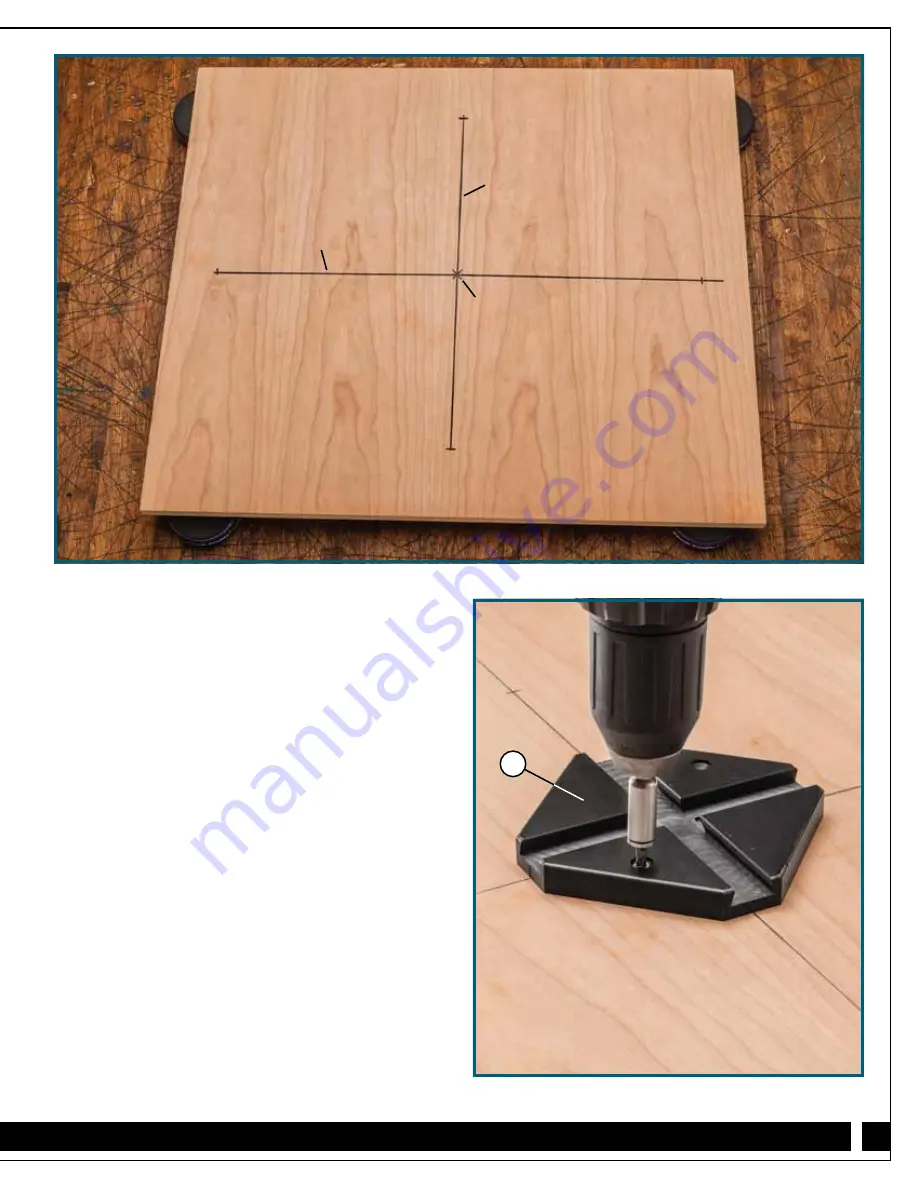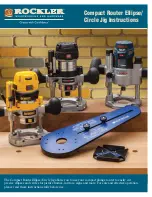
5
Jig and Workpiece Setup
Recommended maximum material thickness (for through routing)
is 1/2".
1. Attach your compact plunge router to the Jig Arm (1) with the
included 10mm Pan-Head Machine Screws (8) and install
the desired bit.
Note: We recommend using a 1/4" diameter spiral up-cut
bit (82652, sold separately).
2. Set up your workpiece on a solid, stable surface.
3. If making through cuts, elevate your workpiece to prevent
damage to the surface underneath. Secure the workpiece
to a sacrificial board, or use spacers to hold and support the
workpiece, including any sections that will be cut free. Make
sure that all parts of the workpiece will remain stationary
during cuts to avoid potentially dangerous and damaging
shifts, and position any spacers out of the path of the cutter.
Routing an Ellipse
1. Mark a center point on your workpiece. Lay out the
major (long) and minor (short) axes of your ellipse so that
they’re perpendicular and intersect at the center point. The
major axis can be a maximum of 24" long and a minimum
of 11". The minor axis can be a maximum of 19" long and a
minimum of 6". (The maximum difference in length between
the major and minor axes is 5".)
Fig. 1.
2. Use the scribe lines machined into the Jig Base to center it on
the intersection of the major and minor axes. Secure the Jig
Base (2) to the workpiece with the included #6 Wood
Screws (7).
Fig. 2.
Fig. 1
Major Axis
Minor Axis
Center point
2
Fig. 2


























